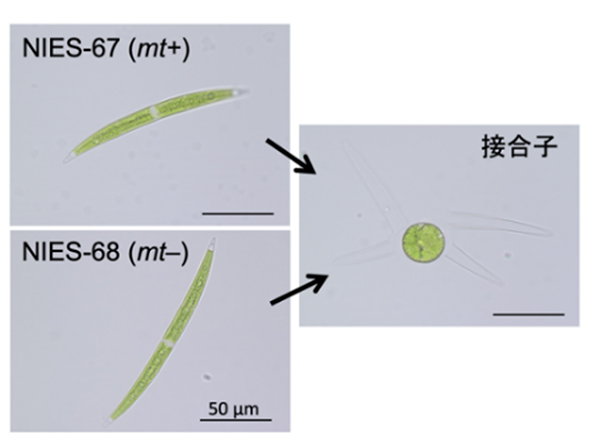歯の寿命が延び、歯の健康状態にも格差があることから、歯のエナメル質を理解することがより重要になっている Longer lifespans, disparities in dental health make understanding tooth enamel more important
2022-12-19 ノースウェスタン大学

しかし、歯のエナメル質の崩壊や先天性疾患を経験する可能性が他の人よりも高い人がどのように、あるいはなぜ存在するのかについてはあまり知られていない。
このたび、ノースウェスタン大学の学際的研究チームが、ヒトの歯に含まれるイオンをマッピングし、エナメル質のライフサイクルと健康への影響について理解を深めるために、サンプル間で構造上の大きな違いがあることを発見しました。
12月19日に米国科学アカデミー紀要に掲載された新しい論文では、これまで研究されていなかった、測定が困難な歯のエナメル質のスケールで、歯の組成の違いを測定する新しいアプローチを実証しています。
研究チームは、X線回折技術を用いて、エナメル質結晶の結晶学的パラメータにピコメートル単位(原子1個分の大きさ)の微小な違いを観察することができ、それをマグネシウムやナトリウム、炭酸塩などのイオンの存在と関連付けた。
この論文の責任著者であるノースウェスタン大学のDerk Joester教授は、「エナメル質結晶内のこれらの特定のイオンを正確に測定できる技術はほとんどありません」と述べています。「これらのイオンは原子番号も濃度も低いので、最終的には原子パーセントの数分の一のオーダーで組成の違いを予測することになるのです。これは、極めて高い精度が要求され、組成を予測するための横方向からのアプローチを用いたX線でのみ可能なことです。”
<関連情報>
- https://news.northwestern.edu/stories/2022/12/variety-in-enamel-composition-may-predict-later-tooth-health/
- https://www.pnas.org/doi/10.1073/pnas.2211285119
ヒト歯エナメル質におけるメソスケール構造勾配 Mesoscale structural gradients in human tooth enamel
Robert Free,Karen DeRocher,Victoria Cooley,Ruqing Xu,Stuart R. Stock ,Derk Joester
Proceedings of the National Academy of Sciences Published:December 19, 2022
DOI:https://doi.org/10.1073/pnas.2211285119
Significance
Dental enamel is integral to the function of human teeth, and its lifelong robustness is critical to well-being. An accurate multiscale model of enamel is vital in many human health contexts, including tooth decay, enamel development and malformation, and restorative dentistry. Submicrometer resolution, synchrotron X-ray microdiffraction shows that crystallographic parameters differ across the intricate rod/interrod microstructure, connecting variations in nanoscale crystallite properties with the mesoscale organization of enamel. Variation of lattice parameters strongly suggests analogous compositional variation. While rod and interrod enamel consistently differ within samples, interindividual variation hints at additional modulating factors. These results demonstrate at least one additional level in the hierarchical architecture of human enamel, with implications for mechanisms governing its formation, functional performance, and degradation.
Abstract
The outstanding mechanical and chemical properties of dental enamel emerge from its complex hierarchical architecture. An accurate, detailed multiscale model of the structure and composition of enamel is important for understanding lesion formation in tooth decay (dental caries), enamel development (amelogenesis) and associated pathologies (e.g., amelogenesis imperfecta or molar hypomineralization), and minimally invasive dentistry. Although features at length scales smaller than 100 nm (individual crystallites) and greater than 50 µm (multiple rods) are well understood, competing field of view and sampling considerations have hindered exploration of mesoscale features, i.e., at the level of single enamel rods and the interrod enamel (1 to 10 µm). Here, we combine synchrotron X-ray diffraction at submicrometer resolution, analysis of crystallite orientation distribution, and unsupervised machine learning to show that crystallographic parameters differ between rod head and rod tail/interrod enamel. This variation strongly suggests that crystallites in different microarchitectural domains also differ in their composition. Thus, we use a dilute linear model to predict the concentrations of minority ions in hydroxylapatite (Mg2+ and CO32-/Na+) that plausibly explain the observed lattice parameter variations. While differences within samples are highly significant and of similar magnitude, absolute values and the sign of the effect for some crystallographic parameters show interindividual variation that warrants further investigation. By revealing additional complexity at the rod/interrod level of human enamel and leaving open the possibility of modulation across larger length scales, these results inform future investigations into mechanisms governing amelogenesis and introduce another feature to consider when modeling the mechanical and chemical performance of enamel.


